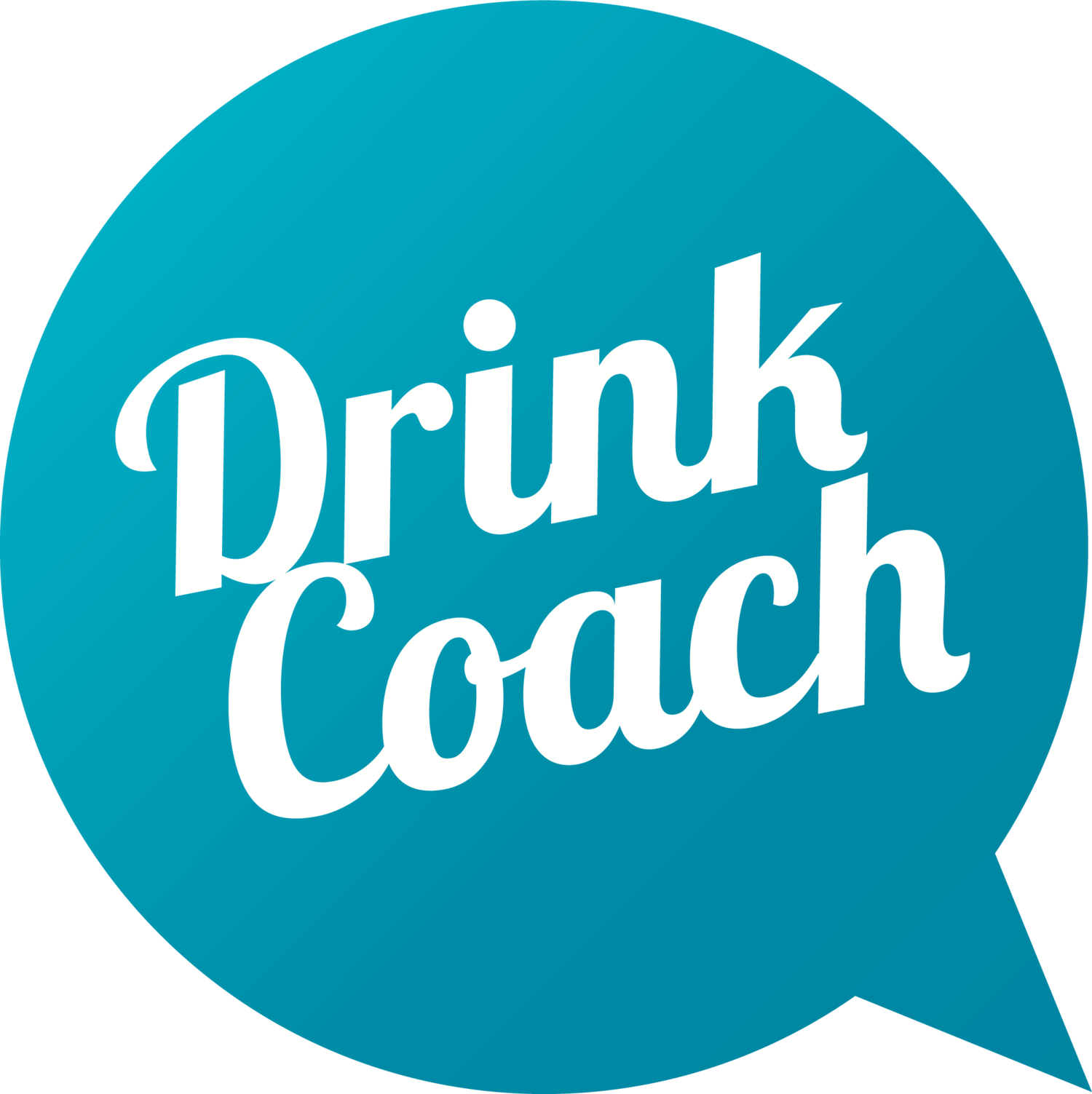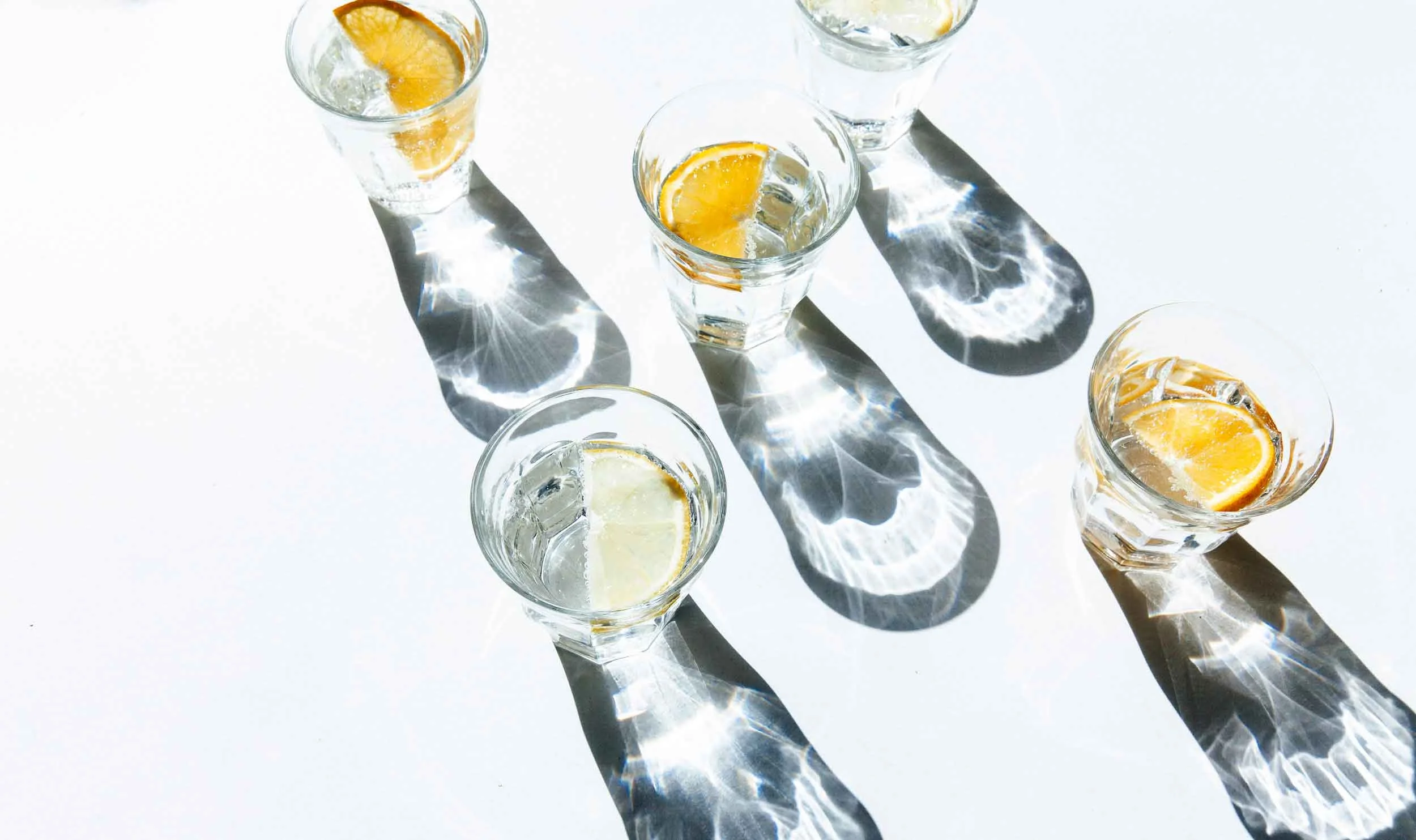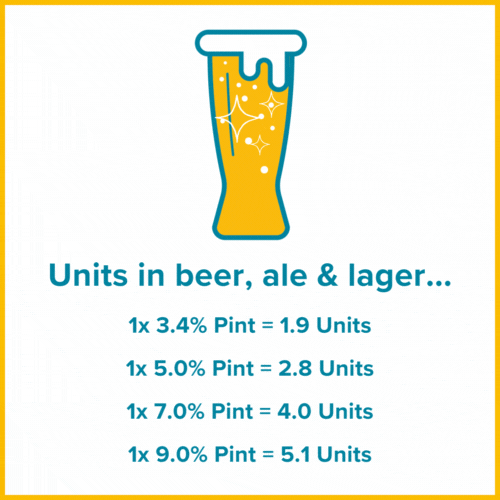What is a unit?
Understanding units can be confusing and frustrating but knowing what they are, how they impact your health, and how many you’re drinking, can help you set goals and cut down.
ABV%
Noticed that drinks with alcohol have an ABV% on them?
To really understand what a unit is, you need to know how strong it is. The ABV% tells us the percentage of pure alcohol per volume.
The higher the ABV%, the higher the amount of pure alcohol.
For example, 5% ABV beer contains 5% of pure alcohol and a 9% ABV beer contains 9% of pure alcohol.
Let's breakdown the maths....
Imagine 1 litre of wine.
If the ABV is 13%, there is 130ml of pure alcohol in 1L (13 units)
If the ABV is 8%, there is 80ml of pure alcohol in 1L (8 units)
Now remember… 1 unit is 10ml of pure alcohol.
That means in a large glass of wine (250ml) at 13% ABV there are 3.25 units of alcohol, compared to 2 units in the 8% ABV wine.
Can you do the maths to find out how many units are in a pint of beer (568.261 ml)?
No? No problem, that’s what calculators are for. Give our unit and calorie calculator a go, it’s just below.
Download our free (and ad free) app so you can have a unit and calorie calculator right in your pocket.
Units in popular drinks
Unit & Calorie Calculator
Use our unit and calorie calculator to work out exactly how many units and calories you’re drinking.
How you can reduce your units
The average UK drinker consumes 18 units a week (4 more than is advised). 4 may not sound like a lot, but over a year that can add up to 208 extra units.
That’s 208 single shots a year 🥃
63 pints of beer, larger or ale a year 🍺
90 medium glasses of wine a year 🍷
Here are some quick and easy wins to help you cut down your units.
Online Coaching
If you'd like to talk to someone or need extra support with your drinking, you can book Online Coaching sessions with one of our experienced specialists. Sessions are confidential, book evening and weekend appointments, and choose your own coach.
Find out if you live in an area where it's free to access up to 6 coaching sessions.
Guidelines
So now you know how many units you’re drinking, it’s important to understand how much is too much.
The official guideline
There are no safe levels of alcohol consumption
The Chief Medical Officers’ guideline for both men and women is that:
To keep health risks from alcohol to a low level it is safest not to drink more than 14 units a week on a regular basis.
If you regularly drink as much as 14 units per week, it is best to spread your drinking evenly over 3 or more days. If you have one or two heavy drinking episodes a week, you increase your risks of death from long term illness and from accidents and injuries.
The risk of developing a range of health problems (including cancers of the mouth, throat and breast) increases the more you drink on a regular basis.
If you wish to cut down the amount you drink, a good way to help achieve this is to have several alcohol-free days each week.
The guideline for those with other risk factors
Remember that the official guidelines reflect low risk and do not mean that there is no risk. Some people with certain risk factors may experience harm even at low levels of drinking including:
People with compromised livers
People on medications
People with mental health issues
People with eating disorders or poor nutrition
People with other chronic health conditions such as diabetes
Some genetic conditions which affect iron levels
It is best to speak to your GP or health professional to get personalised advice around what weekly levels are safe for you.
“Drinking any level of alcohol regularly carries a health risk for anyone, but if men and women limit their intake to no more than 14 units a week it keeps the risk of illness like cancer and liver disease low.”
Tips for cutting down
Cutting down on alcohol can be challenging but very rewarding for your health and well-being. Here are some tips to help you reduce your drinking…
Set Clear Goals:
Make a plan! Having set goals helps you stay on track and will keep you motivated to keep going.
A goal could be; swapping high ABV for lower ABV or reducing the volume by swapping large glasses for smaller ones, having planned no alcohol days every week (2-3 minimum is ideal).
Download the DrinkCoach app. It’s free (and ad free) and allows you to set goals and reminders to help keep you on track.
Know Your Triggers:
Do you know what your triggers are? It could be stress, habits or even a particular person.
Plan alternative activities or responses to these triggers.
Drink Slowly and Mindfully:
Drinks aren’t cheap so enjoy and savour them.
Alternate alcoholic drinks with non-alcoholic ones, like water or soda.
Find Alternatives:
There are a great selection of non and low alcoholic drinks. Beers, wines and spirits are now available in healthier alcohol free versions.
Try mocktails, non-alcoholic beers, or sparkling water with a splash of juice.
Keep Alcohol Out of the House:
If you’re more inclined to drink at home, make sure you don’t add alcohol in your weekly shopping.
If you have a craving you’re less likely to go out to buy alcohol.
Social Support:
Tell your friends and family that you want to cut down. This will allow them to be more supportive and not un-knowingly tempt you.
Spend time with people who support you and avoid those who pressure you to drink.
Seek Professional Help:
If you find it hard to cut down on your own, consider talking to a healthcare provider.
Support groups, counselling, or therapy can be very helpful. You can book Online Coaching sessions with an alcohol specialist to support you make changes. Sessions are free for residents in certain councils.
Reward Yourself:
Set up a reward system for meeting your goals.
Use the money saved from not buying alcohol for something you enjoy.
Track Your Drinking:
Keep a journal of when and how much you drink. Download the DrinkCoach app. It’s free ( and ad free) and allows you to keep track of your units on the go.
This can help you understand your drinking patterns and progress.
Be Patient and Persistent:
Reducing alcohol intake can be a gradual process.
Celebrate small victories and don't get discouraged by setbacks.



















